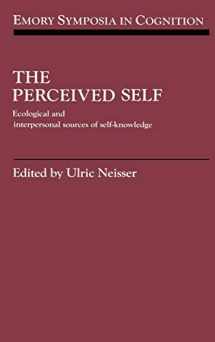
The Perceived Self: Ecological and Interpersonal Sources of Self Knowledge (Emory Symposia in Cognition, Series Number 5)
Book details
Summary
Description
This book brings new ideas to bear on the classical psychological problem of the self. A distinguished interdisciplinary group of contributors explore Neisser's hypothesis that each of us has an "ecological self" based on our immediate situation in the environment and an "interpersonal self" established through social interaction. These aspects of the self, which are based on accurate perception, appear early in infancy. They have implications for topics ranging from motor development to psychopathology to nonverbal communication, to social philosophy. The Perceived Self explores these notions with topics that range from the perceptual and social development of infants to autism and blindness; from mechanisms of motor control to dance and nonverbal communication; as well as from ecological theory to the work of social philosophers such as G.H. Mead and Martin Buber.


We would LOVE it if you could help us and other readers by reviewing the book
Book review



